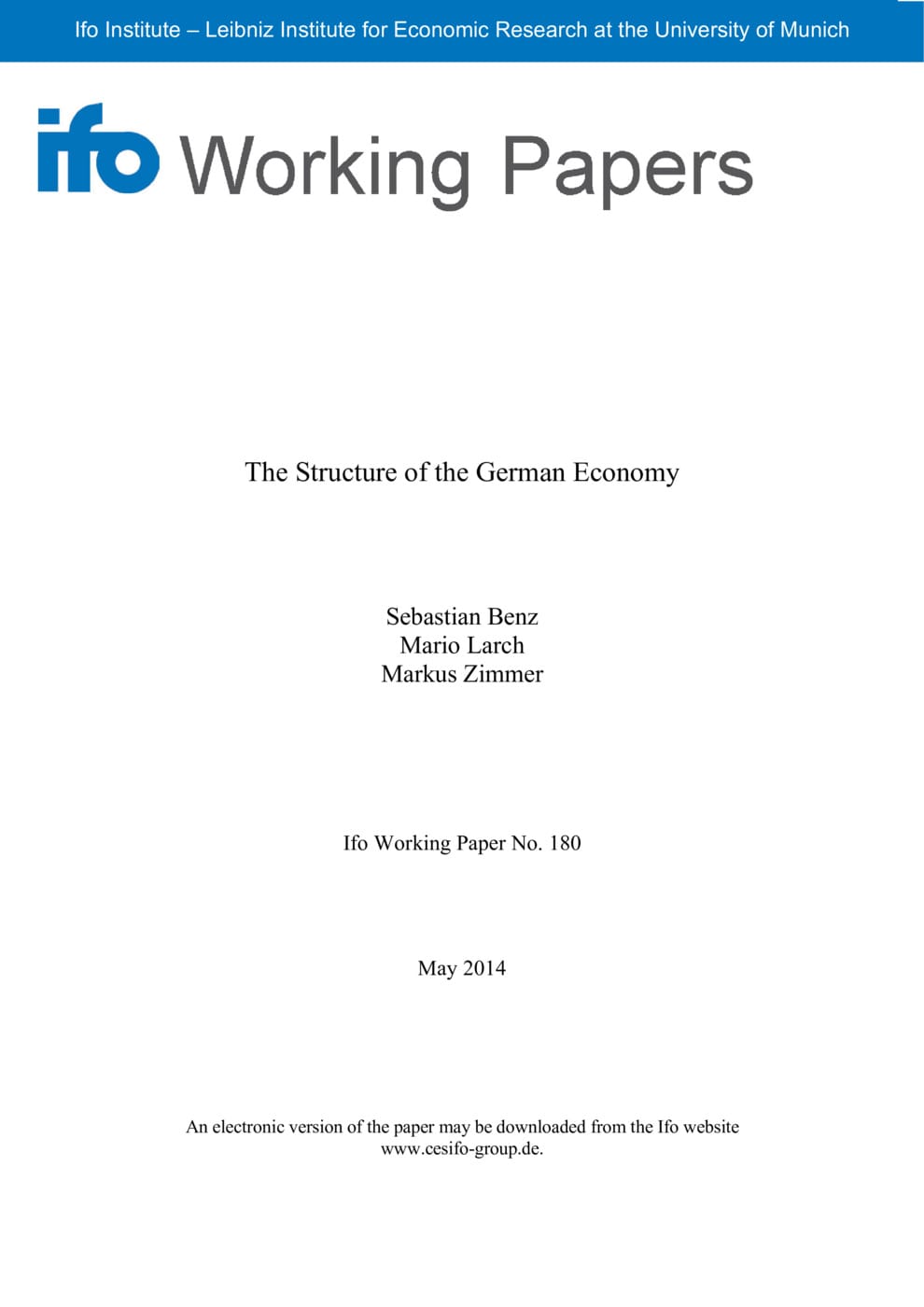The Structure of the German Economy
Ifo Institute, Munich, 2014
Ifo Working Paper No. 180

Exploiting the information contained in an economy’s input-output matrix and using the novel approach developed by Fisher and Marshall (2011), we calculate Rybczynski effects and Stolper-Samuelson effects for Germany in 2007. We show how sectoral output and factor remuneration react to exogenous changes of factor endowments and product prices, respectively. These calculations are implemented using two different models comprising one with labor and capital as the classical production factors and one where we introduce patent stock as an additional factor of production. In the former, we further differentiate between a scenario where all production factors are mobile and one with sector-specific capital. In the latter analysis we measure the impact of innovationtargeting policy action for sectoral output. Positive Rybczynski effects of patents and high-skilled workers are strongest in knowledge-intensive sectors, while other sectors contract. The introduction of patents as a further production factor has only minor influence on the Rybczynski effects of other factors.